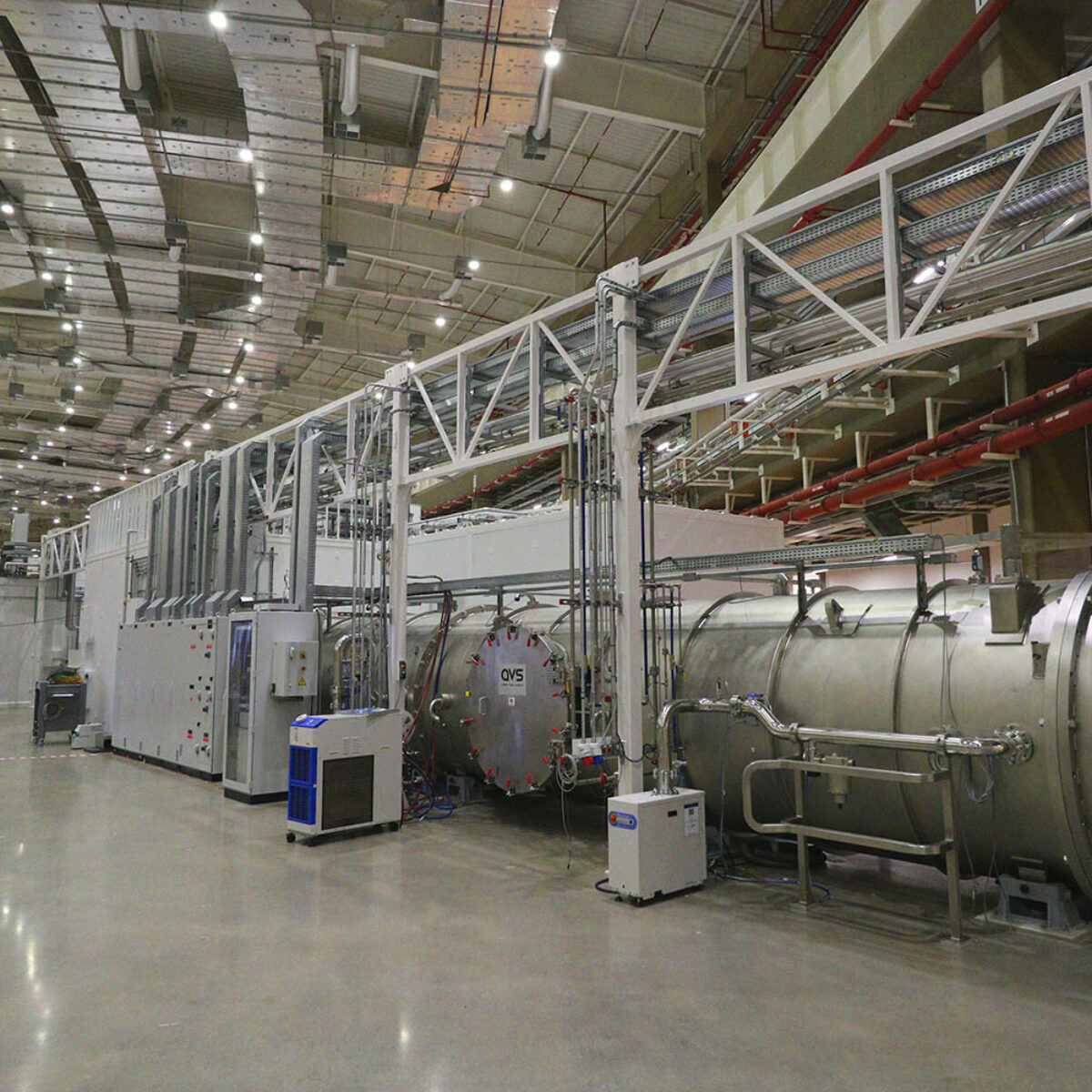
Sapucaia beamline, dedicated to the Small-Angle X-ray Scattering technique (SAXS)
Research station dedicated to small-angle X-ray scattering now moves to the technical and scientific commissioning stage
The detector in the Sapucaia experimental station recently received its first beam of X-rays generated by the Sirius particle accelerators. This beamline, which is dedicated to small-angle X-ray scattering (SAXS), will be an important tool for studying the morphological and dynamic properties of nano and microstructured objects.
This event is a milestone for the Brazilian Center for Research in Energy and Materials (CNPEM) and the Brazilian Synchrotron Light National Laboratory (LNLS), which will resume serving the scientific community with this technique that can be applied in various areas of research such as physics, chemistry, biology, and engineering.

Team present during the acquisition of the first image of the Sapucaia beamline. From left to right: Leandro Barbosa, beamline coordinator; Antônio Gasperini, beamline researcher; Luiz Fernando de Camargo, PhD student; Luciano Candido, scientific instrumentation specialist.
“Small-angle X-ray scattering is widely used by Brazilian researchers. The line dedicated to this technique at UVX, our old accelerator, was one of the lines with the highest user demand. And we are eager to serve this community again at Sirius,” says Leandro Barbosa, coordinator of the Sapucaia beamline.
Learn more about the Sapucaia beamline
Now the Sapucaia beamline moves to the next steps in its technical and scientific commissioning process, when the team starts to test different samples and invites some external users to conduct measurements.
As Mateus Borba Cardoso, head of the Soft and Biological Material Division at LNLS, notes, “Now we begin to fine-tune the components and the experiments that will be routinely carried out by users. This does not mean that Sapucaia is ready to receive researchers, but it puts us in a position to carry out more relevant and realistic testing in experimental terms. So now we are proceeding with technical commissioning, but we are already capable of very gradually beginning to simulate users’ experimental conditions.”

First image collected from the Sapucaia beamline: sample of silver behenate.
The first image from the Sapucaia beamline was obtained from a sample of silver behenate, a chemical compound often used by scientists who work with this technique. This is a standard sample that diffracts in very well-defined positions; this helps to more precisely define the distance between the sample and the detector, and is essential for SAXS.
Sapucaia coordinator Leandro Barbosa adds, “The SAXS technique allows us to see very small things. So far, we have been able to get an X-ray beam to cross through a sample and reach the detector. The next step is to get this image from the detector, work with it, and derive a scattering curve. Using this curve, we will be able to determine the size, shape, and dimensions of the system under study.”
The Brazilian Synchrotron Light National Laboratory (LNLS) works with scientific research and technological development that involves synchrotron light, focusing on the operation and utilization of the multidisciplinary potential of Sirius, the country’s most advanced scientific infrastructure. With ten research stations already online and open to the scientific and industrial communities, Sirius allows thousands of researchers from various areas to test their hypotheses about the microscopic mechanisms that produce the properties of both natural and synthetic materials which are used in a variety of fields such as health, the environment, energy, and agriculture. LNLS is part of the Brazilian Center for Research in Energy and Materials (CNPEM) in Campinas, São Paulo, a private, non-profit organization overseen by the Ministry of Science, Technology, and Innovation (MCTI).
The Brazilian Center for Research in Energy and Materials (CNPEM) is home to a state-of-the-art, multi-user and multidisciplinary scientific environment and works on different fronts within the Brazilian National System for Science, Technology and Innovation. A social organization overseen by the Ministry of Science, Technology and Innovation (MCTI), CNPEM is driven by research that impacts the areas of health, energy, renewable materials, and sustainability. It is responsible for Sirius, the largest assembly of scientific equipment constructed in the country, and is currently constructing Project Orion, a laboratory complex for advanced pathogen research. Highly specialized science and engineering teams, sophisticated infrastructure open to the scientific community, strategic lines of investigation, innovative projects involving the productive sector, and training for researchers and students are the pillars of this institution that is unique in Brazil and able to serve as a bridge between knowledge and innovation. It is responsible for operating the Brazilian Synchrotron Light (LNLS), Biosciences (LNBio), Nanotechnology (LNNano), and Biorenewables (LNBR) National Laboratories, as well as the Ilum School of Science, which offers a bachelor’s degree program in science and technology with support from the Ministry of Education (MEC).
Ten beamlines are in operation and can receive regular proposals.
232 new projects will be carried out at the Sirius beamlines during the first half of 2024